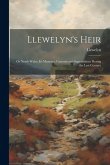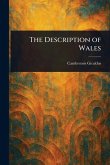The Itinerary Through Wales and The Description of Wales are two important historical and descriptive works by Giraldus Cambrensis (Gerald of Wales), a 12th-century cleric and historian. In The Itinerary Through Wales, Giraldus recounts his journey through Wales in 1188, providing observations on the land, its people, and their customs. He offers valuable insights into the social and political landscape of medieval Wales. The Description of Wales focuses on the characteristics of the Welsh people, their history, and their culture. Giraldus explores their strengths and weaknesses, and defends their unique identity. These works are essential for understanding medieval Wales and the cultural interactions between the Welsh and the Anglo-Normans. This edition makes these foundational texts accessible to modern readers interested in Welsh history and travel literature. This work has been selected by scholars as being culturally important, and is part of the knowledge base of civilization as we know it. This work was reproduced from the original artifact, and remains as true to the original work as possible. Therefore, you will see the original copyright references, library stamps (as most of these works have been housed in our most important libraries around the world), and other notations in the work. This work is in the public domain in the United States of America, and possibly other nations. Within the United States, you may freely copy and distribute this work, as no entity (individual or corporate) has a copyright on the body of the work. As a reproduction of a historical artifact, this work may contain missing or blurred pages, poor pictures, errant marks, etc. Scholars believe, and we concur, that this work is important enough to be preserved, reproduced, and made generally available to the public. We appreciate your support of the preservation process, and thank you for being an important part of keeping this knowledge alive and relevant.
Bitte wählen Sie Ihr Anliegen aus.
Rechnungen
Retourenschein anfordern
Bestellstatus
Storno








